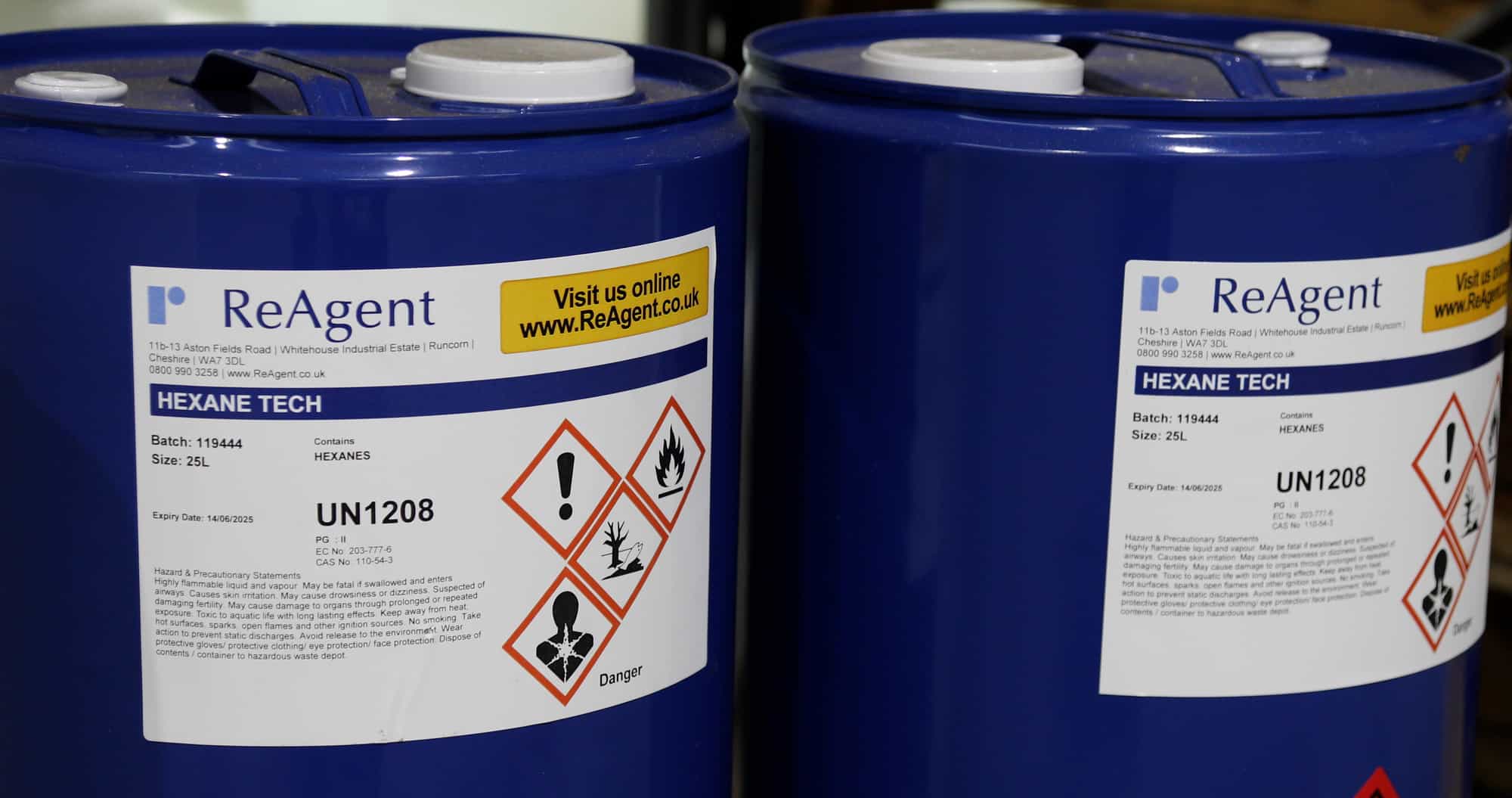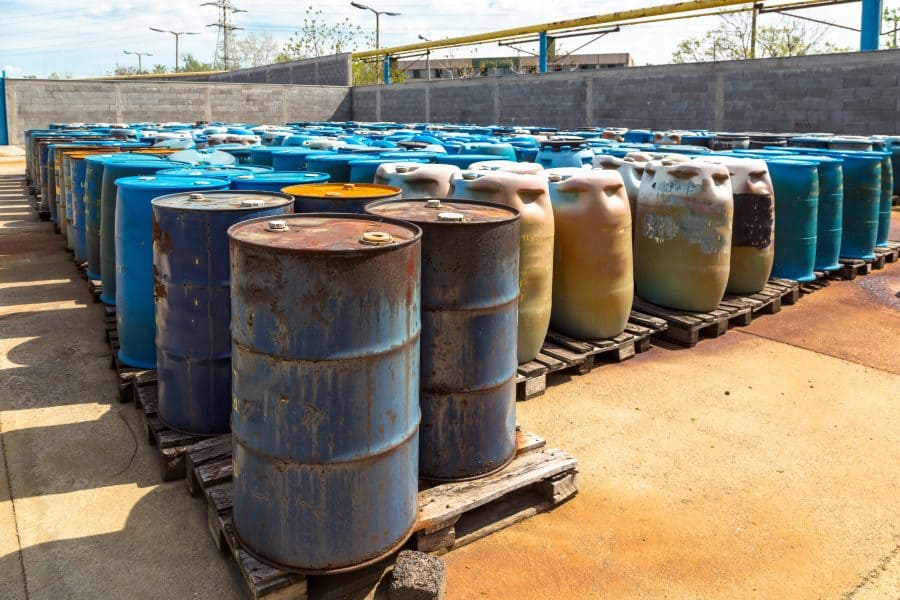Laboratory chemicals refer to any chemical that’s used in laboratory testing and experiments. Most are standard chemical reagents or simple chemicals that serve as basic ingredients to synthesise more complex chemicals. They can be used for investigative or diagnostic purposes, such as in the preparation of drugs or in laboratory experiments.
These experiments are typically small-scale, and are conducted on small samples of inorganic substances (e.g. rocks), organic substances, or even biological specimens. These types of tests and analyses require specific chemical reagents and reactants, which is where laboratory chemicals step in.
Chemistry is a largely experimental and practical science that relies on laboratory testing to arrive at conclusions. Whether you’re a secondary school student performing a simple titration reaction or a pharmaceutical chemist researching a new medicine, you’ll rely on laboratory chemicals to conduct your experiments.
In this post:
How to Arrange Chemicals in the Laboratory
Safety is the number one priority when it comes to handling and storing laboratory chemicals. To ensure this, chemicals must be arranged according to their reactivity, compatibility, and level of hazard. This will safeguard against any unwanted reactions or degradation.
While most laboratory chemicals only require simple containers that are sealed and non-reactive, like glass or plastic bottles, some will require special containers and precise environmental conditions, such as temperature and pressure parameters.
For example, highly reactive metals like sodium must be immersed in mineral oil inside a non-reactive sealed container. Meanwhile, gases like oxygen should be stored in pressurised metal containers, and volatile liquid chemicals, such as alcohols, esters, ketones, and ethers, must be stored at temperatures below their flashpoint in order to prevent fire. Some chemicals are so hazardous that they cannot be stored, and are instead made in the lab.
Here are some basic principles you can use to properly arrange laboratory chemicals in a safe and organised manner:
- Label chemical containers: Proper labelling is important so that you can prevent mishaps. You must include the name of the substance and its hazard classification, i.e. whether it’s corrosive, oxidising, flammable, or toxic. If the container of a chemical is too small to be labelled, such as with a vial or ampoule, you must put it in a secondary container like a rack or tray, which you should label.
- Segregate chemicals: Incompatible substances that are likely to react with each other must be separated from each other. You should not store incompatible chemicals on the same shelf or even in the same cabinet.
- Store minimal amounts of chemicals: You do not need to store large amounts of chemicals in the laboratory, especially if they’re hazardous. Only store the right amount that you need. You can also have a separate storage area separated from the laboratory.
- Keep an inventory: You should always know your chemical stock. Ensure to take note of chemical expiration dates and how many should be stored or replenished on a regular basis.
- Do not store chemicals under the sink: Many chemicals shouldn’t be mixed with water. If you store chemicals under the sink, they may get wet or contaminated.
- Store chemicals at a proper height: Cabinets and shelves shouldn’t be too tall so that the chemicals can easily be accessed. This will prevent accidents and spillage. For example, breakable containers should be stored below shoulder height.
- Maintain the right environmental conditions: Make sure you store chemicals at the right temperatures and humidity levels. Some chemicals may even need to be refrigerated, so always check their requirements prior to storage.
- Use trays and racks: Use trays and racks to store chemical containers in cabinets. This will prevent the cabinets from being corroded by chemical droplets.

How to Dispose of Chemical Waste in a Laboratory
You must dispose of all chemicals that are expired, hardened, evaporated, or degraded. Many laboratory chemicals are hazardous and should be properly disposed of based on specific protocols, otherwise they could pose serious health risks and environmental impact.
Benzene, for instance, is carcinogenic, while substances that are highly corrosive have the potential to destroy habitats. Other chemicals could react with organic compounds and potentially get incorporated into the food chain by leaking into water sources or contaminating the environment.
Specific regulations may vary slightly from country to country, but the following general guidelines are applicable in most situations:
- Store chemicals in appropriate containers: In most cases, plastic sealed containers are preferable when storing chemical waste. This is because plastic containers are generally inert, eliminating the risk of an unwanted reaction and minimising the potential for leaks. You may also use glass containers for chemicals that react to plastic.
- Wash down the drains: In some cases, washing chemicals down the drain is sufficient for waste disposal. For instance, organic acids like acetic acid can easily be diluted with water, and have the added benefit of eventually decomposing. However, you should never attempt to wash chemicals down the drain that contain heavy elements, like antimony, arsenic, lead, beryllium, cadmium, cobalt, and mercury. You should also not pour chemicals down the drain that are classified as organohalogens, organonitrogen pesticides, mineral oils, or hydrocarbons.
- Incinerate some chemicals: If your laboratory has an incinerator facility, you can incinerate some organic chemical waste. Some laboratory chemical waste that can be incinerated include all organic solvents, soluble organic waste, paraffin, and mineral oil.
- Special disposal: Some highly hazardous chemicals, like asbestos and cyanide, must be properly sealed and labelled. They can be disposed of by going to specialised and authorised disposal sites.

How to Treat Chemical Spillages in the Laboratory
Chemical spillages in the laboratory can be dangerous and ruinous, so any kind of spillage must be dealt with immediately – do not wait for it to dry or react with other substances. The best way of handling a chemical spillage in a laboratory will depend on the type of chemical.
For example, if a corrosive liquid chemical has spilled onto a table, it can be diluted with water and wiped off with a thick cloth – or a mop if the spillage is on the floor. An inert substance like sand can also be used to absorb the spillage before removing it. Meanwhile, if there has been an acid spillage, you must first neutralise the acid with soda ash or sodium bicarbonate. Similarly, base spills should be neutralised with citric acid or ascorbic acid.
Regardless of the type of spillage, however, never touch chemicals without wearing protection. Always wear rubber gloves and other protective gear, like goggles and a laboratory gown or apron, when handling spilled chemicals. Do not allow chemicals to contaminate your normal clothes. In some cases, you’ll also need to wear a breathing apparatus or gas mask to prevent inhaling any fumes from the chemicals.
How Are Laboratory Chemicals Stored?
Although laboratory chemicals are labelled with their names, they’re not typically stored in alphabetical order. Instead, they’re stored based on chemical compatibility and hazard classification in order to prevent accidents. Inert containers are also commonly used when storing these types of chemicals.
Below is a table summarising the classes of laboratory chemicals and their recommended storage methods. For example, corrosive inorganic acids must not be stored in the same cabinets as bases. Similarly, explosives, such as acetone peroxide, should be stored away from other chemicals because they’re highly incompatible with oxidisers, acids, bases, and flammable liquids.












